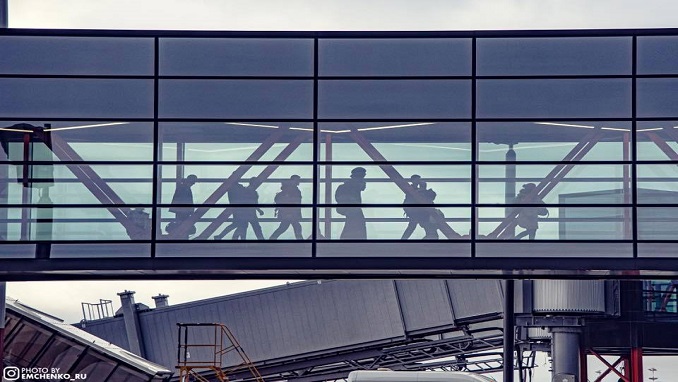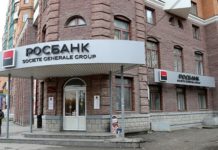In an interview with International Airport Review, Sheremetyevo International Airport’s Chairman, Alexander Ponomarenko, discusses how airports are often at the forefront of both medical and economic crises, and how Sheremetyevo acted to reduce the spread of COVID-19.
One aspect of the COVID-19 pandemic, which is extremely important in analyzing the situation, is the circumstances in which airports find themselves. Today, airports are a link where medical and economic consequences of the pandemic converge and are most pronounced.
Airport managers around the world quickly responded to the situation they were facing and proposed appropriate solutions, and the leadership of Sheremetyevo realized from the very beginning the vital role the airport would play in preventing the spread of coronavirus infection in Russia and beyond. Guided by government directives, and in collaboration with responsible government agencies, the airport quickly arranged a triple system of monitoring and checking the passengers arriving on international flights.
Firstly, flights arriving from countries that were first to report numerous cases of COVID-19 (PRC, Republic of Korea, Iran and Italy) were redirected to Terminal F, where initial screening took place. By 19 March 2020, all passengers arriving from countries with a difficult epidemiological situation passed through the dedicated Terminal F, where they had to undergo a medical examination and screening.
The first preventive measures were taken on board of the aircraft before the passengers deplaned. Employees of Rospotrebnadzor (The Russian Federal Service on Surveillance of Consumer Rights Protection and Human Welfare) took the body temperature of passengers using portable thermal imaging devices. Then, all passengers and crew members under went another – more thorough – screening, using stationary thermal imaging devices at the exit of the passenger ramp in the arrivals area. Particular attention was paid to passengers whose body temperature was elevated during the screening on board. They were immediately isolated from other passengers.
The third stage of the screening took place in the baggage claim area. Passengers who arrived from abroad were examined by employees of the Moscow Department of Health, the Ministry of Health for Moscow Region and Rospotrebnadzor, and if needed, personnel from the health centres of Sheremetyevo Airport were involved. Two emergency teams were always on duty at the airport.
As part of the screening, the body temperatures of all passengers and crew members arriving in Moscow were measured and, if necessary, biomaterial samples were taken for subsequent analysis for COVID-19. Medical personnel also carefully examined passengers for signs of illness. Anyone who had a fever or signs of a cold was taken to one of the isolation wards at airport health centres, and then to a hospital specializing in the treatment of infectious diseases.
As in most of the world’s international airports, all arriving passengers also had to fill out a questionnaire about their physical condition and recent trips. In addition, passengers serviced in other terminals always had the opportunity to contact the health centres of terminals D, E and B, where they were examined by highly-qualified medical personnel.
Sheremetyevo Airport also recognized the special importance of providing information about the disease and the preventive measures travelers should take, and provided full-scale, regularly updated information. Audio announcements about preventive measures were broadcast in the terminals and the recommendations of the Federal Service on Surveillance of Consumer Rights Protection and Human Welfare on countering coronavirus infection were placed at information desks, on monitors in terminals and on the airport’s official website.
All this was done in combination with active measures to detect and prevent the spread of coronavirus infection among staff, as well as measures to disinfect all areas.
The most stringent measures were applied at Terminal F, where all international flights permitted by the aviation authorities, including from countries with adverse epidemiological conditions, are currently arriving. A special coating of disinfectant is applied on jet bridges used by passengers to deplane.
The aviation business was the first to be impacted by the coronavirus pandemic, and now the management of Sheremetyevo Airport needs to effectively respond to the very complex challenges of our time.
“At a time when international air transportation was mostly suspended, and officials and citizens are looking forward to a decrease in the number of cases of infection and defeating the virus, we reviewed and adjusted current plans,” Ponomarenko says.
To maintain the balanced operation of the airport, we made a number of management decisions. All investment projects were suspended, except for the urgent reconstruction of Runway-1. All non-production costs were significantly reduced, production resources were redistributed and processes were optimized. Three out of five passenger terminals were temporarily decommissioned, as well as Runway-3, until the passenger traffic and the frequency of take-off and landing operations are restored to levels that justify their use.
“We have also optimized staff schedules. Within the framework of current labour law, we moved part of the airport staff to a reduced working week, while others had to take time off. These measures applied to employees are also preventive and have been taken to protect their health and reduce the risk of illness. Top management of the company voluntarily gave up more than 60 per cent of their annual remuneration,” Sheremetyevo’s Chairman noted.












